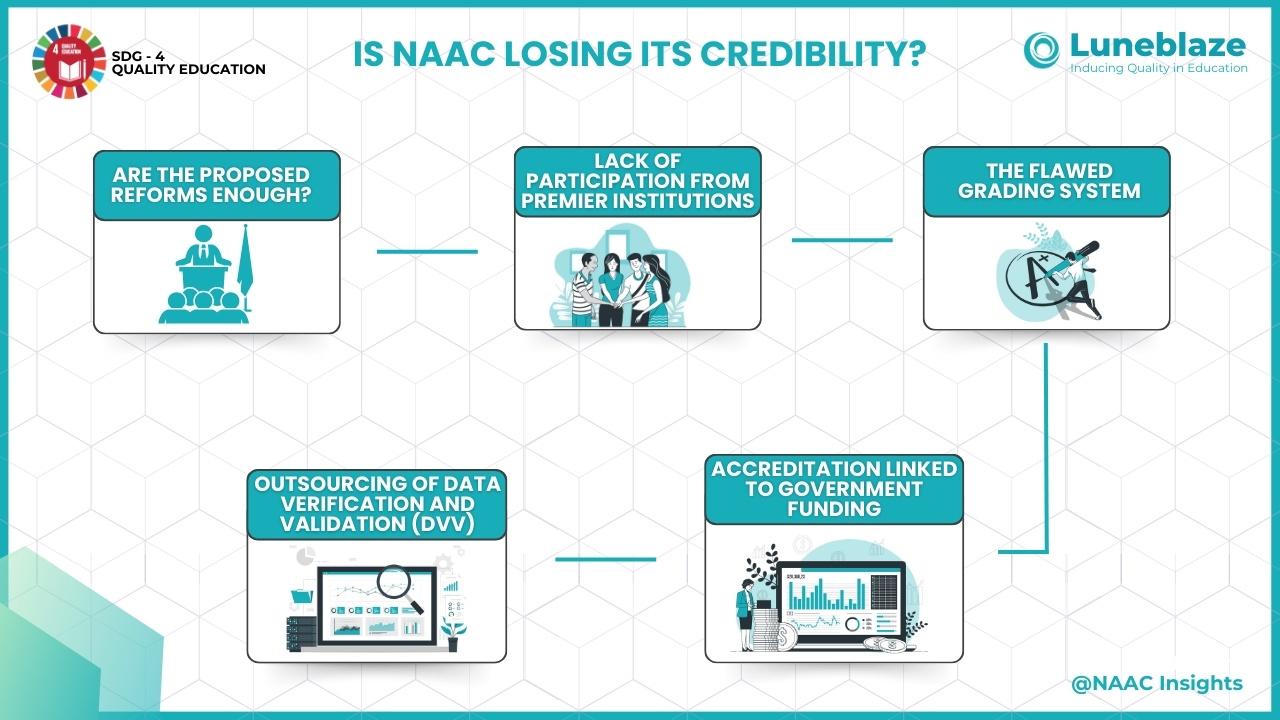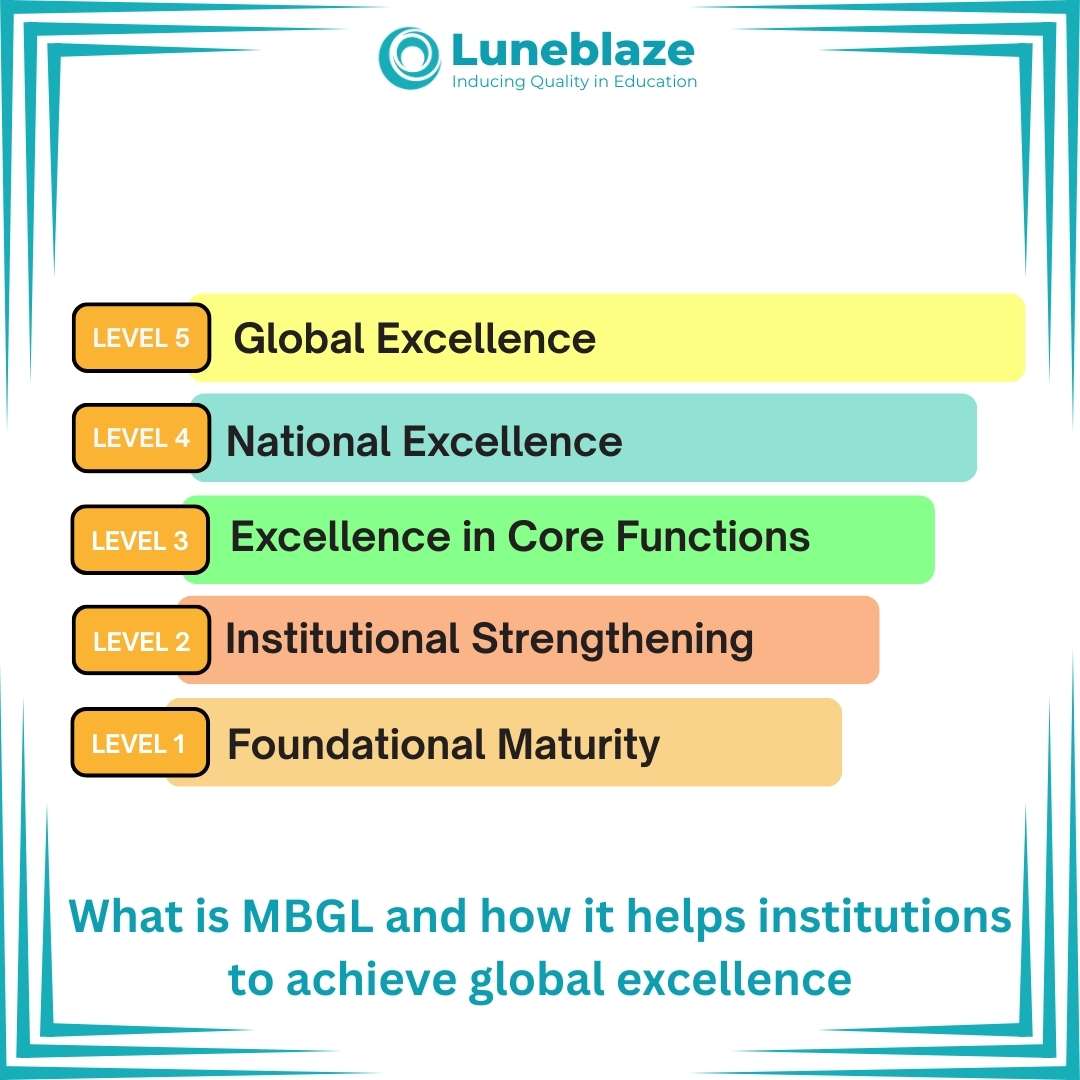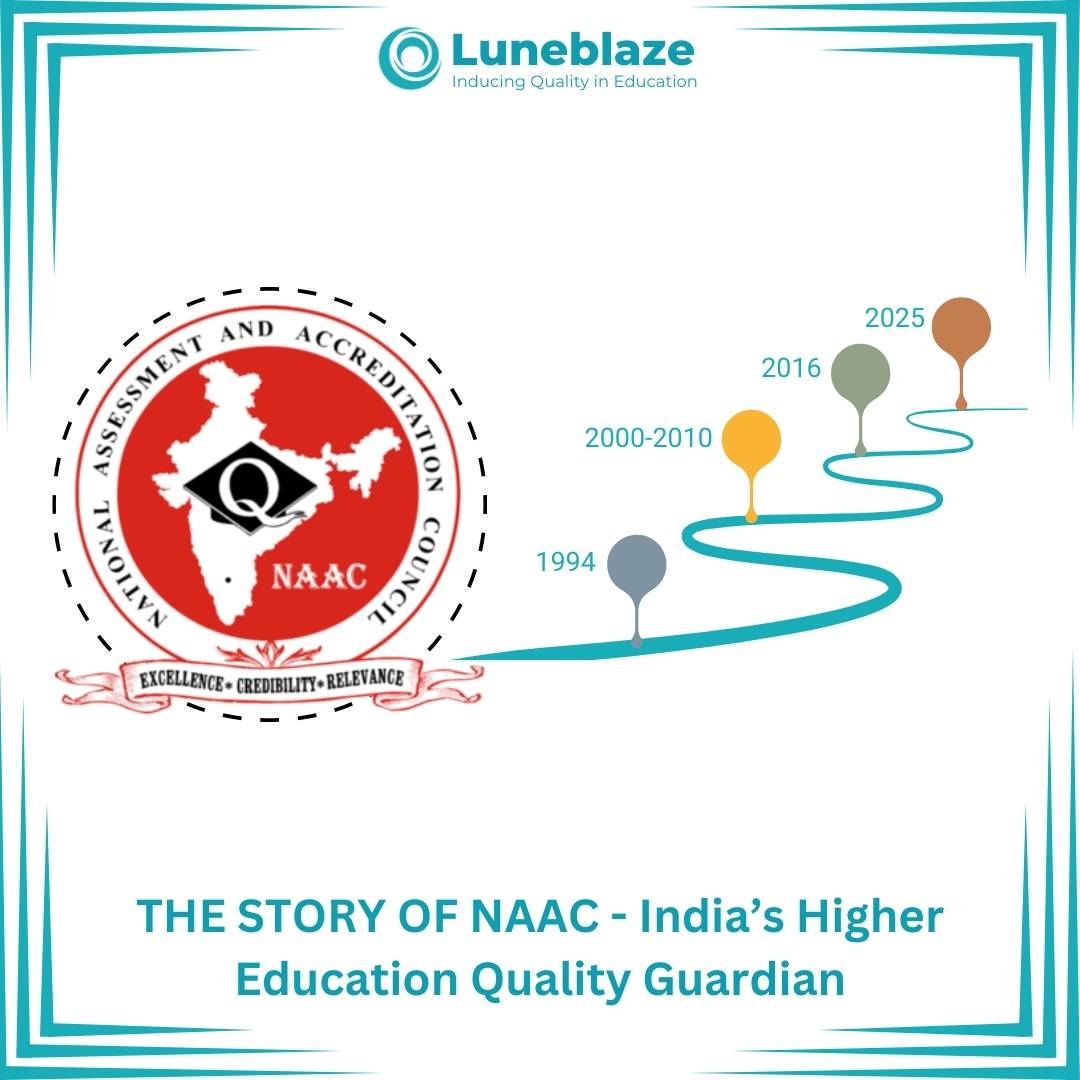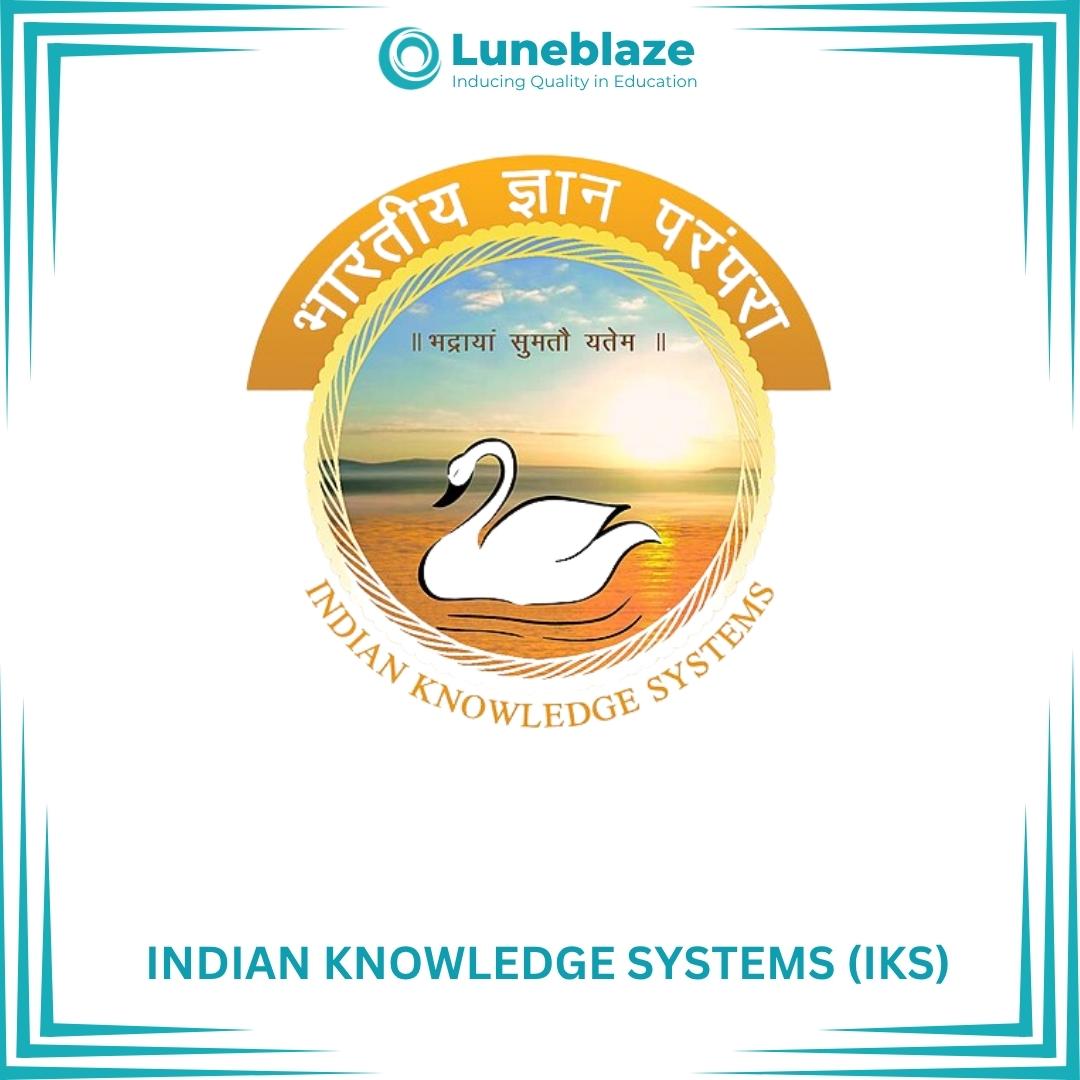Is NAAC Losing Its Credibility?

Mar 28, 2025
The National Assessment and Accreditation Council (NAAC) plays a crucial role in evaluating and accrediting higher education institutions (HEIs) in India. Accreditation ensures that institutions meet established quality standards, promoting excellence in education. However, in recent years, NAAC has faced increasing scrutiny over its credibility and effectiveness. The recent corruption scandal involving bribery for higher accreditation grades has only deepened these concerns. With NAAC responding by removing over 800 experts from its panel, it has sparked urgent discussions about reforms and the future of the accreditation system in India.
The recent controversy surrounding NAAC has put the agency in the spotlight for all the wrong reasons. A university chancellor, along with several officials, was arrested for allegedly bribing experts to obtain a higher accreditation grade. This revelation not only undermines the trust in the accreditation process but also raises a fundamental question: Can an institution's quality truly be reflected through a potentially compromised system? In response to this scandal, NAAC swiftly removed over 800 experts from its panel. While this step demonstrates a willingness to take corrective action, it also highlights the severity of the problem. The integrity of the accreditation process is now under question, and without structural changes, mere reactive measures may not be enough to restore faith in the system.
Are The Proposed Reforms Enough?
One of the most widely discussed reform measures comes from the recommendations of the Radhakrishnan Committee. A key suggestion is the adoption of a two-step accreditation model where HEIs would first undergo a mandatory binary accreditation, determining whether they meet the basic quality standards. This would be followed by an optional, more detailed grading process, assessing institutional maturity and performance metrics. Additionally, there has been a push for digitization in peer assessments. By reducing the reliance on on-site evaluations, digital assessments could potentially minimize biases and opportunities for malpractice. However, such a move also raises concerns about data security and the reliability of automated evaluation methods. While these reforms aim to streamline and improve the accreditation process, they might not be sufficient without addressing the fundamental issue of NAAC’s autonomy and governance. A regulatory body that lacks independence and authority may struggle to enforce meaningful change.
Lack of Participation from Premier Institutions
One of the longstanding criticisms of NAAC is the reluctance of India’s premier institutions, including the Indian Institutes of Technology (IITs) and Indian Institutes of Management (IIMs), to participate in the accreditation process. Their absence raises major concerns about NAAC’s authority and the overall quality assurance framework in Indian higher education. If the most prestigious institutions in the country do not consider NAAC accreditation valuable, it calls into question its credibility and relevance. Furthermore, the accreditation process is meant to establish a nationwide standard for higher education. Without the participation of top institutions, this standard remains incomplete and fragmented, making it difficult to assess the true quality of higher education institutions across the country.
The Flawed Grading System
Since its inception in 1994, NAAC’s grading system has faced multiple revisions, often leading to confusion and inconsistency. Unlike other accreditation bodies that use a straightforward accredited/non-accredited status, NAAC assigns grades to institutions based on their performance. While this approach theoretically provides more detailed insights, it has led to several challenges, including the manipulation of scores, subjectivity in evaluation, and unnecessary complexity. Institutions often focus more on securing a high grade rather than genuinely improving quality. The criteria for grading are not always transparent, making the system vulnerable to biases. Furthermore, multiple revisions have created uncertainty among institutions about what truly defines quality in higher education, resulting in inconsistent application of standards.
Outsourcing of Data Verification and Validation (DVV)
Another controversial decision by NAAC has been outsourcing 70% of the Data Verification and Validation (DVV) process to external agencies that have limited familiarity with the higher education landscape. The involvement of non-academic agencies in verifying educational quality raises doubts about the accuracy and relevance of assessments. With only 30% of assessments conducted by academic peers, the accreditation process now relies more on external audits than professional educational evaluations. This shift has led to a decline in trust among institutions and academicians. Many respected educators have disengaged from the accreditation process, further diminishing NAAC’s standing in the academic community. The reduction in peer-based assessments suggests a lack of confidence in academic professionals and their ability to accurately evaluate the HEIs.
Accreditation Linked to Government Funding
Another issue that has emerged is the linkage between accreditation grades and institutional benefits such as autonomy and government funding. While this system was introduced to encourage institutions to maintain high-quality standards, it has had unintended consequences. Institutions may resort to data manipulation to secure a higher grade and gain financial advantages. Instead of focusing on genuine academic and infrastructural improvements, many institutions prioritize strategies that merely boost their accreditation scores. This approach has shifted the focus from quality enhancement to score-driven competition, reducing the true value of accreditation as a tool for educational excellence.
At the heart of these concerns lies a fundamental question—who ensures the credibility of NAAC itself? Accreditation bodies are supposed to uphold the integrity of higher education, but if their own processes seem flawed, the entire system collapses. To restore faith in the accreditation process, NAAC must undergo structural reforms that go beyond procedural changes. Greater autonomy is essential for NAAC to function independently, free from political and bureaucratic influence. A clear, objective, and stable accreditation framework is necessary to ensure transparency and consistency in evaluations. Bringing back experienced academicians into the peer review process will enhance credibility, while periodic audits of NAAC by an independent oversight body can help maintain accountability. Ensuring the credibility of accreditation bodies like NAAC is essential for maintaining and improving the quality of higher education in India. Without a transparent and accountable accreditation system, even the most well-intended reforms risk being ineffective. The time for superficial fixes is over—what NAAC needs is a structural overhaul that reinstates trust in the system and truly enhances the quality of higher education in the country.
To assist HEIs in their accreditation processes, Luneblaze provides an AI enabled end-to-end solution to HEIs for all their accreditation criteria needs. With the help of Luneblaze’s AI-enabled solutions, HEIs can organize and manage all their data related to accreditation, streamlining the process and ensuring compliance with national standards.
Together, let’s raise educational standards. Reach us at: naac@luneblaze.com
Source: [Deccan Herald]
Trusted by
100+
Institutions
worldwide
since 2017
Get started with Accreditation Excellence
Explore how our AI-enabled accreditation solution simplifies the accreditation journey










